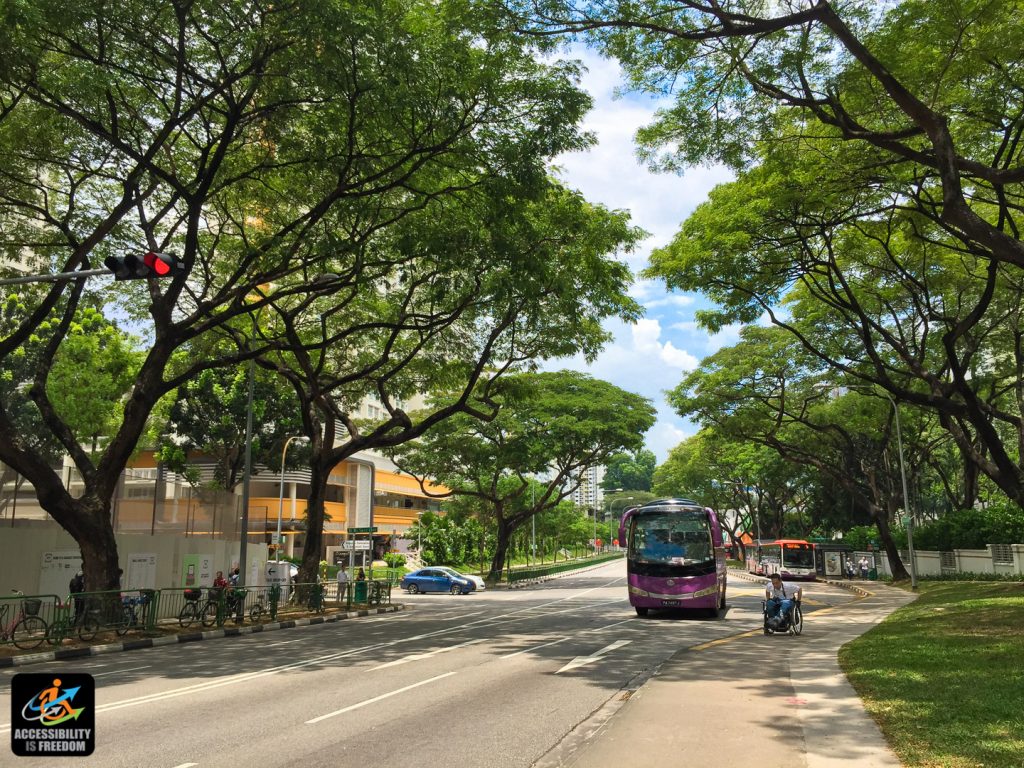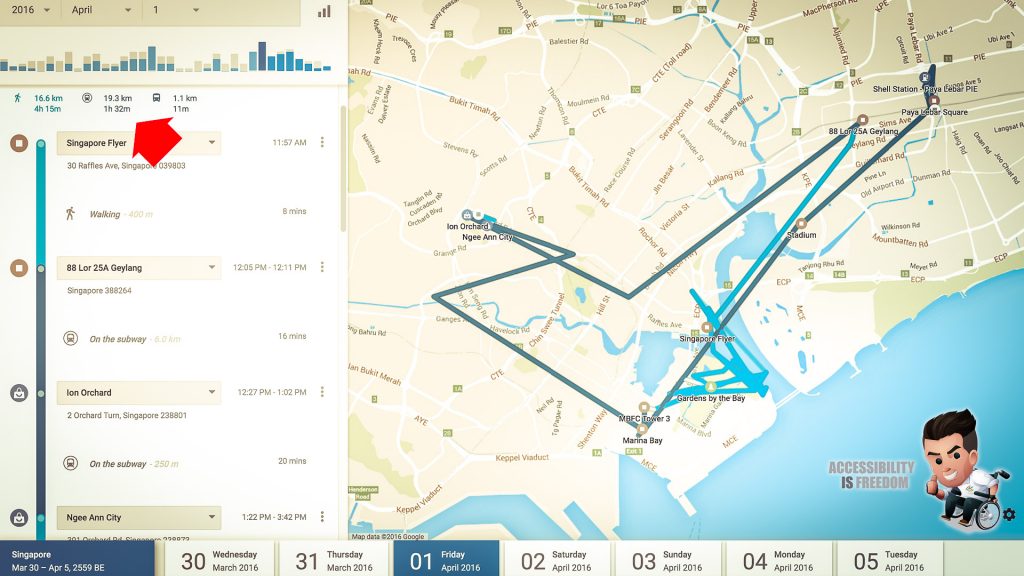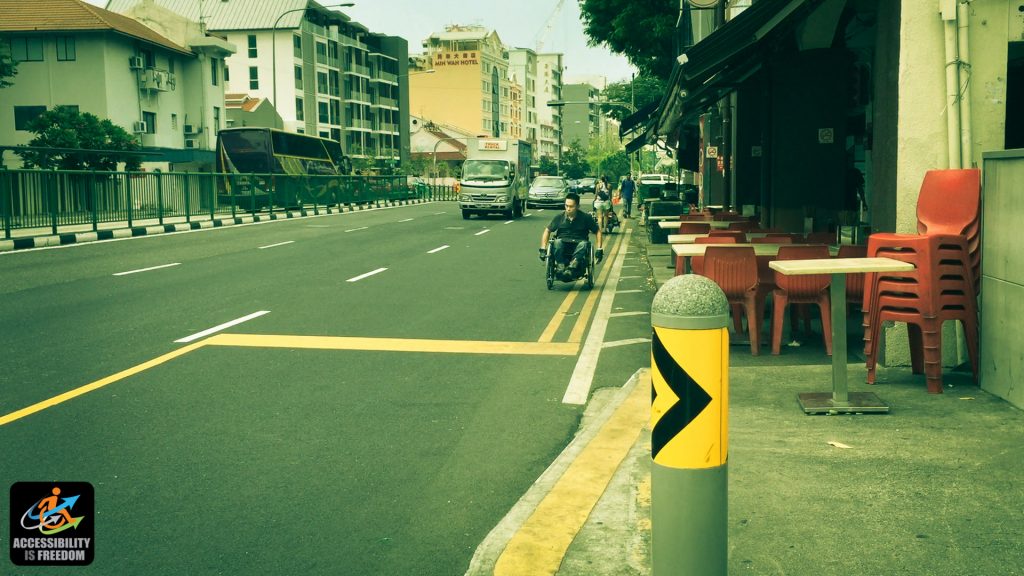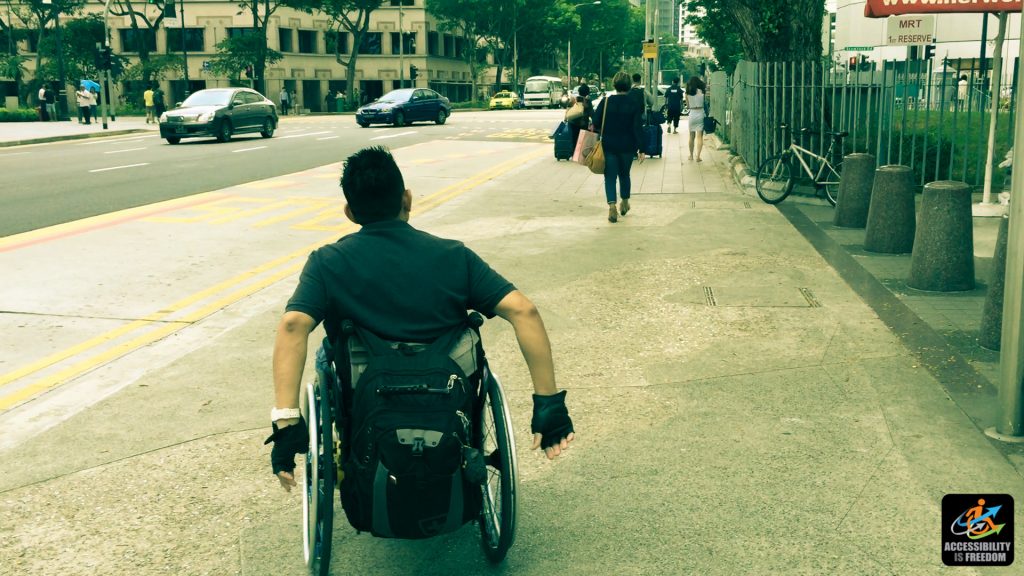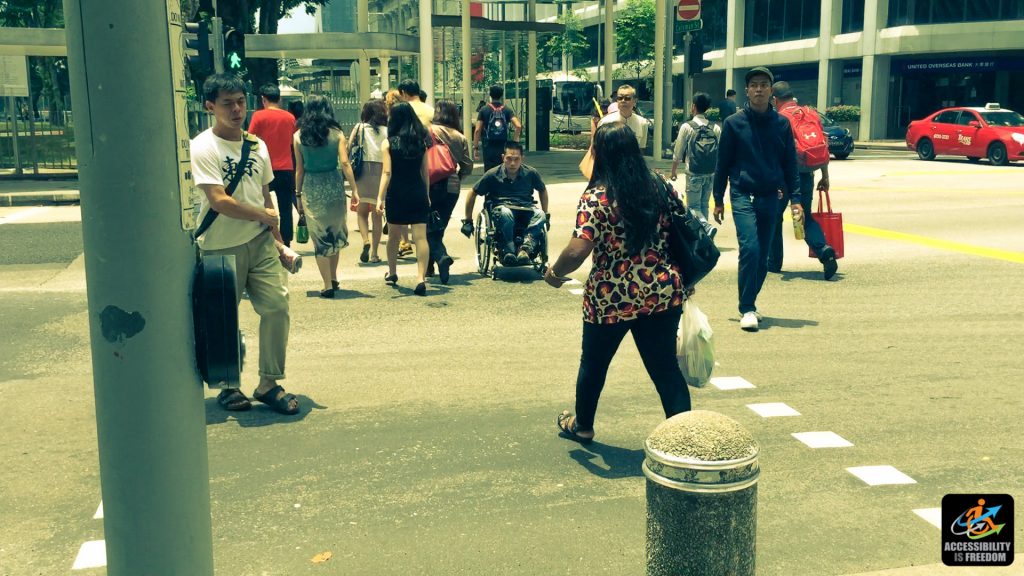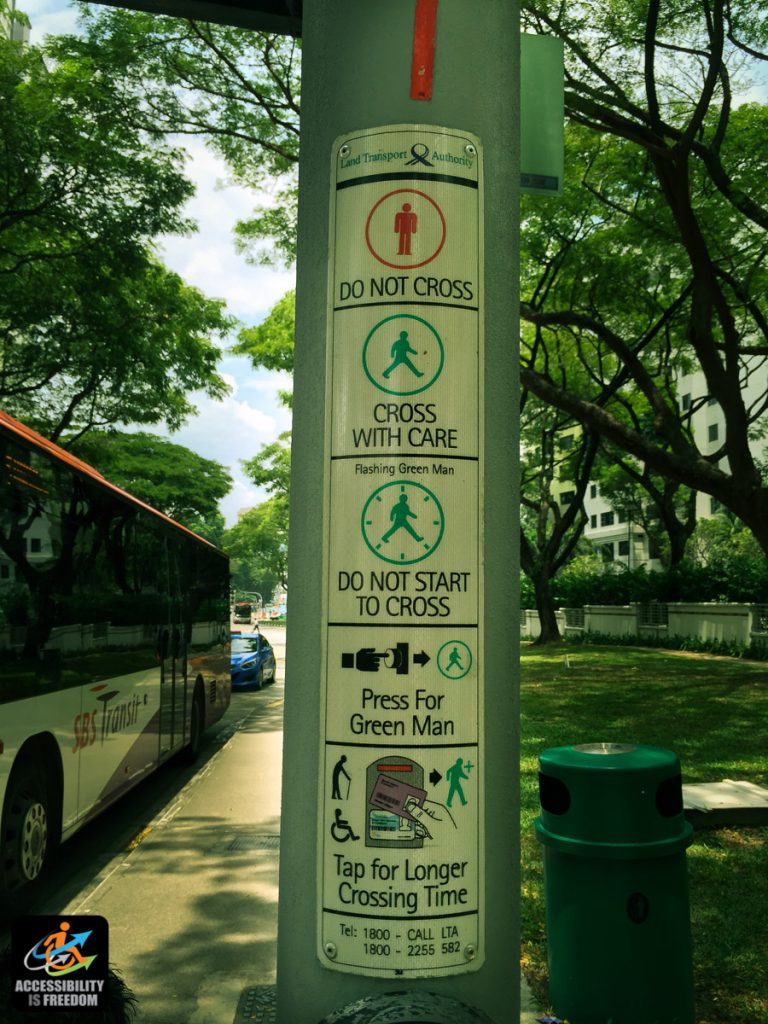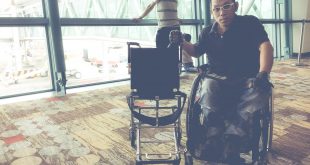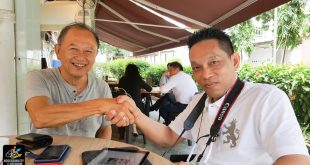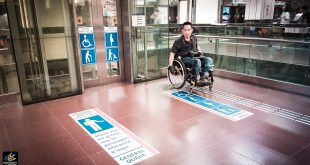“Because accessible facilities is essential for everyone.”
Any overseas trip of the Accessibility Is Freedom has one sole aim: to observe and learn the different surrounding environment, and bring it to improve our country.
In term of “public space,” which is the main focus of this article, I spent the whole 6 days in Singapore to wander around the city with no less than 10 km/day. My discovery in its accessibility lies in the followings.
1. Sidewalk
I only found one problem nearby my hotel at Geylang area, a Red Light District of Singapore, forcing me to get down on the road and said hi to random cars. Yet it’s still not as bad as in Bangkok, to be honest. The rest of the whole country was pretty good, too good to explain. I found no problem at all. The sidewalk in general was wide enough, and enormously wide, I repeat ENORMOUSLY wide, at many new-built places. I fondly appreciated that.
My score: 8.5 out of 10
2. Crosswalk & Crossing, Ramp, and Pedestrian Traffic Light
There were pedestrian traffic lights at every corner equipped with push button and audio system for the blinds.
Red light = cannot cross
Green light = cross with caution
Flashing green light = consider stop crossing (it will turn red soon.)
PWDs could even use their ‘special card’ to scan it to extend the timing in crossing. People in general understand and respect this rule of law. The drivers would slow down and stop the car to let pedestrians cross safely. From my personal experience, every car stopped for me once they noticed me waiting to cross.
However, there were some, though not many, people who committed jaywalking which immediately received my warning.
My score: 9 out of 10
3. The Road, Congestion, Cleanliness, and Pollution.
It’s impeccably clean and marvellously tidy, with fresh air. The road was empty at large, what a fantastic scene. My neighboring hotel found little garbages at public space. The garbage was rarer to find once I reached downtown area. Magnificent skyscrapers, by the way.
I felt that the weather was not as hot and humid as in Bangkok. With the virtue of fresh air and few cars on the road, I could breath nicely to the fullest on sidewalk.
Beautifully, there were big trees all along the street which facilitated greatly for pedestrians to walk. The dust and smog were too little, not a problem to mention.
At corners, there were some public constructions which they had to close the entire sidewalk. Yet, they built a temporary walkway with highest safety standard: ramp was available and the construction materials looked so firm and functional.
My score: 9 out of 10
4. Braille Block for the Blind
At public space, there were warning blocks (one type of braille block) before every ramp on the intersection. However, it’s not available on typical sidewalk. It’s rather available on public transportations.
My score: 4.5 out of 10
5. Street Vendors
I barely found any street vendors on sidewalk. I mostly encountered them secretly doing business at Geylang area during night time.
To the best of my knowledge, it looked like the Singaporean government set up food establishments at a specific zone with colossal hygiene standard. The overall management was so tidy and well-organised. CCTV were prevalent everywhere. Everybody was so strict, serious, and respected this rule of law, making all the places clean and enjoyable.
My score: 8 out of 10
6. The Bus and Bus Stop
The Singapore’s Ministry of Transport stated clearly on its website the exact numbers of ‘accessible bus’ in current service. I appreciated this sincere and frank information. I wish our country follows suit.
Many bus stops were under gentrification for enhanced accessibility such as having wider space for wheelchair user to wait. From my experiment, some bus drivers still picked me up even though I waited at the old, non-accessible bus stop.
7. The Train
Unfortunately, I barely used the train. But as long as I’d experienced, I highly enjoyed its convenience and accessibility. I also noticed that there were few security officers at train stations. I assumed that this was due to the high labour wage which forced them to require as fewest officers as possible, while optimized the remaining to the fullest potentials. They were making things automated with human-free. I believe this kind of scenario would happen in Thailand in the next 10 years.
My score: 9 out of 10.
 Accessibility Is Freedom เข้าถึงและเท่าเทียม | Accessible and Equal
Accessibility Is Freedom เข้าถึงและเท่าเทียม | Accessible and Equal
